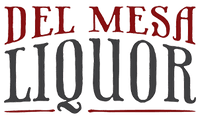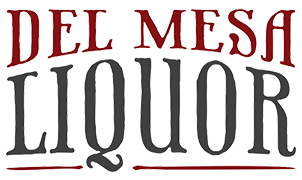Welcome to the beautiful world of wine! Whether you're a seasoned connoisseur or just dipping your toes into the vast ocean of flavours, understanding the information on a wine label is essential. As you browse through the virtual aisles of an online liquor store, it's easy to feel overwhelmed by the plethora of choices.
Fear not! In this blog post, we'll unravel the mysteries behind wine labels, giving you the knowledge to make informed decisions when selecting your next bottle of wine. We'll cover everything from the basics, like the name, country of origin, and grape variety, to the finer details, such as appellation, winemaker's notes, and aging information.
So, grab your favourite glass and get ready to decode those labels like a pro. Let's embark on this flavorful journey together and make your online liquor store experience remarkable!
The Basics Of A Wine Label
Before diving into the intricacies of wine labels, you must familiarize yourself with the essential components you'll typically find. Understanding these key elements will provide a solid foundation for deciphering the information displayed on wine labels, allowing you to make informed choices when browsing an online liquor store. Let's explore each component in more detail:
Name Of The Wine
The name of the wine represents either the brand or the specific wine itself, serving as a unique identifier. It reflects the producer's identity and can give you a glimpse into their winemaking style.

Country And Region Of Origin
The country and region of origin specify where the wine was produced—for example, France, Italy, or California. The region provides additional information about the wine's characteristics, as different regions often have distinct terroirs that impact the taste and style of the wine.
Vintage
The vintage indicates the year the grapes were harvested and is crucial for understanding the wine's age. Some wines display a specific year, such as 2019 or 2020, while others indicate "non-vintage" (NV) if they blend multiple years. The vintage influences the flavour profile and can help you gauge the wine's potential for aging.
Grape Variety Or Blend
This component indicates the type of grape(s) used to make the wine. It can be a single variety, such as Chardonnay or Cabernet Sauvignon, or a blend of different grape varieties, like a Cabernet Sauvignon and Merlot blend. Understanding the grape variety or mix gives you insights into the potential flavours and characteristics of the wine.
Alcohol Content
The alcohol content, displayed as a percentage, reveals the amount of alcohol present in the wine. It ranges from light to high and directly impacts the wine's body and intensity. Wines with lower alcohol content tend to be lighter-bodied and more delicate, while those with higher alcohol content often have more richness and intensity.
Understanding Additional Label Details: Enhancing Your Wine-Buying Experience
Regarding wine labels, additional information is often provided that can significantly enhance your wine-buying experience. These details offer valuable insights into the wine's origin, flavour profile, aging process, production methods, and quality. Here are some essential label details to look for when exploring wines at an online liquor store:
Appellation or Protected Designation of Origin (PDO)
The appellation or PDO specifies the legally defined geographic area where the grapes used in the wine were grown. Each region has unique soil, climate, and winemaking traditions that contribute to the wine's distinct characteristics. Understanding the appellation can give you insights into the wine's quality and authenticity.
Winemaker's Notes
Many wine labels include tasting notes or descriptions provided by the winemaker. These notes offer valuable information about the wine's flavour profile, aroma, and food pairing suggestions. They provide a glimpse into the winemaker's intended style and can assist you in selecting wines that align with your preferences.

Image: iStock
Aging Information
Some wine labels indicate the aging process the wine has undergone, such as "aged in oak barrels" or "barrel fermented." This information influences the wine's taste and texture, as the aging process imparts additional flavours and complexities. Understanding the aging details can help you choose wines with the desired characteristics.
Organic, Biodynamic, Or Sustainable
Wines produced using organic, biodynamic, or sustainable practices may carry certifications or indications on their labels. These practices prioritize environmentally conscious farming methods and quality production. By selecting wines with these labels, you can support sustainable practices and enjoy wines made with care for the environment and your palate.
Awards And Ratings
Wine labels may display medals, awards, or ratings received from reputable wine competitions or critics. These accolades are a reference point for the wine's quality and taste. They can be accommodating when exploring unfamiliar wines or seeking assurance of a well-regarded selection.
By paying attention to these additional label details, you can better understand the wines you're considering. Whether it's the geographical indication, the winemaker's insights, aging information, production methods, or awards and ratings, these details contribute to an enhanced wine-buying experience.
Decoding Wine Label Jargon
When browsing online liquor stores, you may encounter various terms on wine labels that can be confusing. Here are some commonly used wine label jargon and their meanings:
Reserva/Reserve
This term typically implies that the wine has been aged longer than usual before release, resulting in added complexity and depth of flavour.
Brut/Sec/Extra Dry
These terms indicate the sweetness level of sparkling wines, ranging from dry to slightly sweet.
Old Vine/Vieilles Vignes
This term refers to grapes harvested from old, mature vines, which often signifies higher quality and concentrated flavours in the wine.
Estate Bottled
When a wine is labelled as "estate bottled," the winery grows and harvests the grapes on its property, ensuring control and quality throughout the winemaking process.
Single Vineyard
A wine labelled as "single vineyard" signifies that the grapes used to produce the wine came from a specific vineyard, showcasing the unique characteristics of that particular terroir.
Cru
In certain wine regions, such as Bordeaux or Burgundy, the term "cru" refers to a specific vineyard or group of vineyards known for producing exceptional wines.
Tannins
Tannins are compounds in grape skins, seeds, and stems that contribute to the wine's texture and structure. Terms like "soft tannins" or "firm tannins" indicate the level of astringency in the wine.

Image: iStock
Tips For Choosing Wine Online
Now that you have a better understanding of wine labels, here are some tips to help you make informed decisions when purchasing wine from online liquor stores:
Explore Different Regions And Varieties
Use the information on wine labels to explore wines from different regions and grape varieties. This will allow you to discover new flavours and expand your wine palate.
Consider Food Pairing
Pay attention to tasting notes and food pairing suggestions on the wine labels. Pairing the right wine with your meals can enhance the dining experience and complement the flavours.
Research Ratings And Reviews
Utilize online resources and reviews to gather insights about specific wines or producers. This can provide valuable information and help you make informed choices.
Take Advantage of Filters And Search Options
Online liquor stores often provide filters and search options based on various criteria, including region, grape variety, price range, and ratings. Utilize these tools to narrow down your options and find wines that suit your preferences.
Consider Your Budget
Set a budget before browsing online, as it will help you focus on wines within your price range. Remember, great wines can be found at various prices, so don't be afraid to explore different options.
Final Thoughts
In conclusion, understanding the information on a wine label is a valuable skill when navigating the vast selection of wines available at an online liquor store. By decoding wine labels, you can confidently explore different regions, grape varieties, and vintages, finding the perfect bottle to suit your taste preferences. Whether you're a wine enthusiast or a novice wine lover, the details on a wine label provide valuable insights into the wine's origin, flavour profile, and aging process.
When shopping for wine online, take advantage of the filters and search options online liquor stores provide. This allows you to narrow your choices and find wines that align with your preferences and budget. Don't forget to consider food pairing suggestions and ratings/reviews to enhance your wine-buying experience further.
So, the next time you visit an online liquor store armed with the knowledge of wine label decoding, you can confidently choose the perfect bottle of wine to enjoy on any occasion. Cheers to exploring the world of wine through online shopping!
 Log in
Log in
 My Wishlist
My Wishlist Reward Program
Reward Program Corporate Gifts
Corporate Gifts Customer Help
Customer Help


